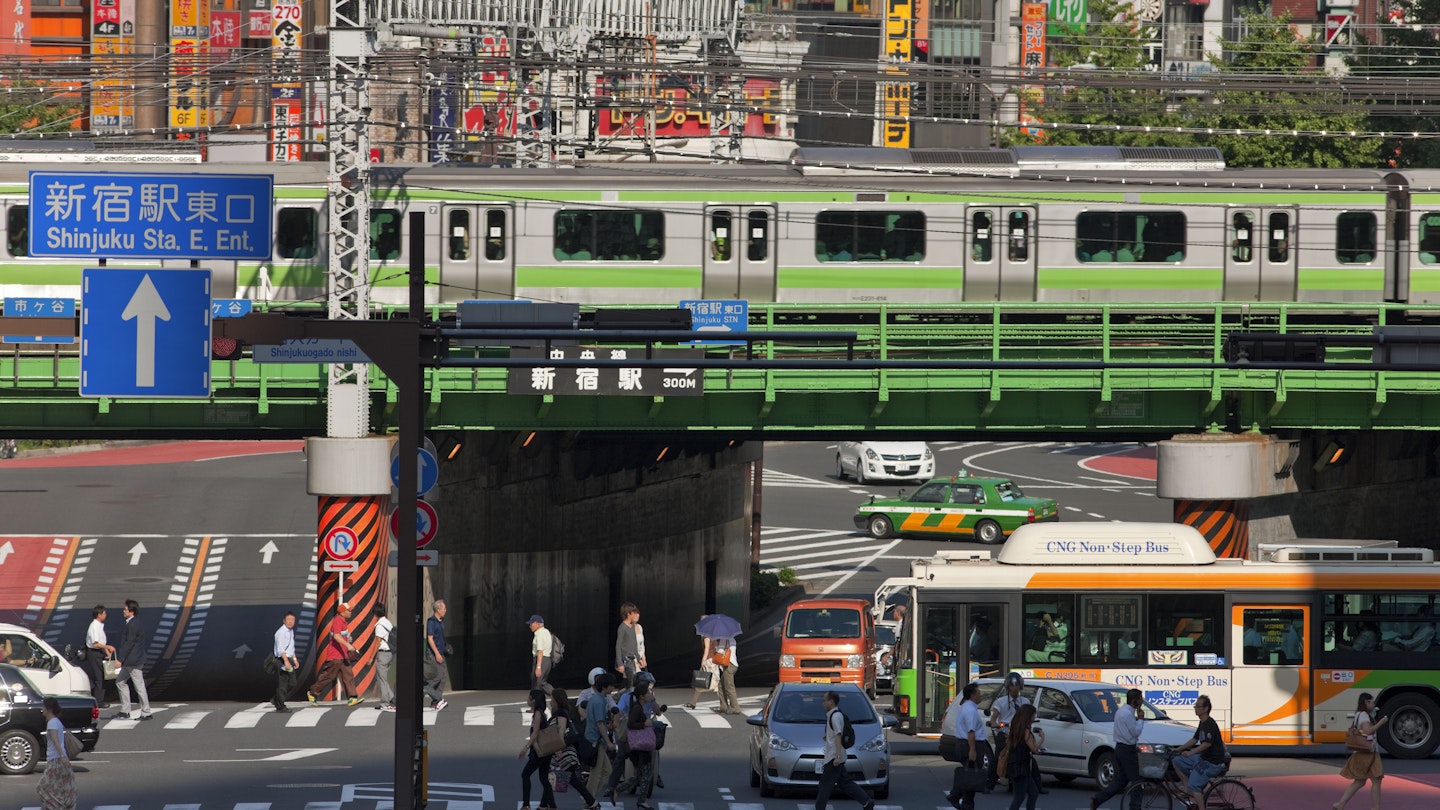Understanding Tokyo’s Public Transport
Tokyo’s subway and train maps can seem daunting for first-time travelers and even repeat visitors. Nevertheless, it is well signposted in English, and once you grasp how the system operates, it becomes as straightforward as any major city’s public transport – and, in fact, works far better than most.
Stay on the Yamanote Line for Your First Visit
To start, orient yourself by realizing that what most people consider central Tokyo is mostly accessible within walking distance of the Yamanote Line — a circular JR line operated by JR East. Most attractions that first-time travelers wish to see are either located on the Yamanote Line or require just one easy connection.
Several smaller stops along the line boast local character and reasonably priced hotels, providing a genuine feel of Tokyo. For instance, Otsuka is a favorite, complete with a charming tram that travels through central Tokyo, while Nippori offers a variety of decent hotels and serves as a quick link to the Keisei Skyliner fast train heading to Narita Airport.
Moreover, JR trains to Narita, along with the Keikyu trains and Tokyo monorail to Haneda, are also accessible via the Yamanote Line. If you’re looking to explore further to destinations like Mt Fuji, Hakone, or various locales in the Kanto region, all major train termini are conveniently situated on the Yamanote as well.
Ride Trains and Subways with Ease
Tokyo is home to numerous train and subway lines operated by different companies, which can be perplexing. However, with a tap-to-pay card, traveling is remarkably inexpensive (just a few hundred yen for trips within central Tokyo). It doesn’t matter which company runs the line, whether it’s a subway or a train.
Note that some subway lines integrate commuter trains that may not stop at every station, causing slight confusion. The most you may encounter is mistakenly boarding a rapid train, passing by your intended station, and then needing to double back a couple of stops by crossing the platform and catching the next train.
For many travelers, unless your accommodation is far from central Tokyo, the complicated bus network and most commuter trains are unnecessary.
Utilize Google Maps for Navigational Support
In recent years, Google Maps has significantly improved for international tourists, offering step-by-step navigation that details transfer points in both English and Japanese.
This resource is exceptionally user-friendly, making it the go-to choice for almost all travelers navigating the city.
Avoid Luggage, Food, and Drinks on Public Transport
Tokyo’s public transport isn’t tailored for luggage, especially larger suitcases. For your sanity, avoid bringing anything larger than a shoulder bag or backpack during rush hours. Off-peak times still recommend no more than a small cabin bag.
Instead, consider using a luggage service like Kuroneko Yamato, which typically costs around ¥2000. Most importantly, the exception applies to the Tokyo Monorail to and from Haneda Airport. My usual tactic is to combine that ride with a taxi to my destination from Hamamatsucho, the monorail terminal in central Tokyo.
Alternatively, consider the airport limousine bus; and, if there are more than two passengers, a taxi can also be economical. Always consult your hotel for personalized advice.
As a general rule, avoid eating on trains unless there’s a table for dining, primarily available on long-distance services. Drinking is usually permissible on the platform, particularly near vending machines, which also offer recycling bins for your bottle or can.

Catch Your Last Train
When compared to other major cities across the globe, Tokyo’s public transport operates earlier at night—the last trains on several lines depart before midnight. Platform screens display this information, and you can also search on Hyperdia, Jorudan, or Google Maps by inputting an arrival time like 0300 to ascertain your last travel options.
(If you miss the last train, don’t fret; the first trains usually resume shortly after 0500, allowing time for late-night karaoke sessions, rest at a manga café, or even a stay at a capsule hotel or business hotel.)
Skip the Japan Rail Pass for Tokyo Travel
The Japan Rail Pass offers fantastic value for traveling between cities but isn’t particularly useful for travel within Tokyo. Additionally, using it requires showing it at staffed ticket windows rather than utilizing the convenient tap-to-pay gates, forcing you against the flow of other travelers.
While there are one-, two-, and three-day subway passes available, they often don’t provide significant savings compared to the pay-as-you-go Suica rates.
Utilize a Suica or Pasmo Tap-to-Pay Card
Japan has a comprehensive network of tap-to-pay cards that are interchangeable across cities. In Tokyo, the JR version is called Suica, while private railways offer Pasmo. Regardless of which card you choose, they function effectively together.
These IC cards can be used across subway networks, JR trains, and the monorail, as well as in nearly every shop throughout the city—preventing you from accumulating pocketfuls of small coins.
You can purchase a Suica card at most major stations; just be aware that it must be bought with cash. A deposit of ¥500 is required, which is refundable upon returning the card when exiting the country—minus a ¥220 fee if you hold a balance exceeding that amount.
Add a Suica to Your Smartphone
Many modern smartphones equipped with NFC functionality allow you to load a Suica card electronically into their payment wallets. This process is somewhat complex, so be sure to seek out online guides on how to accomplish it. A perk of this method is that you can easily add funds to the card via credit card using systems like Apple Pay or similar services.
Enjoy the Ride!
Utilizing public transportation can provide a remarkable glimpse into real-life experiences wherever you travel. Consider engaging in some people-watching, standing at the front window of the train for a driver’s perspective, and taking a moment to appreciate the sounds of Tokyo. Relish every moment of your journey!





